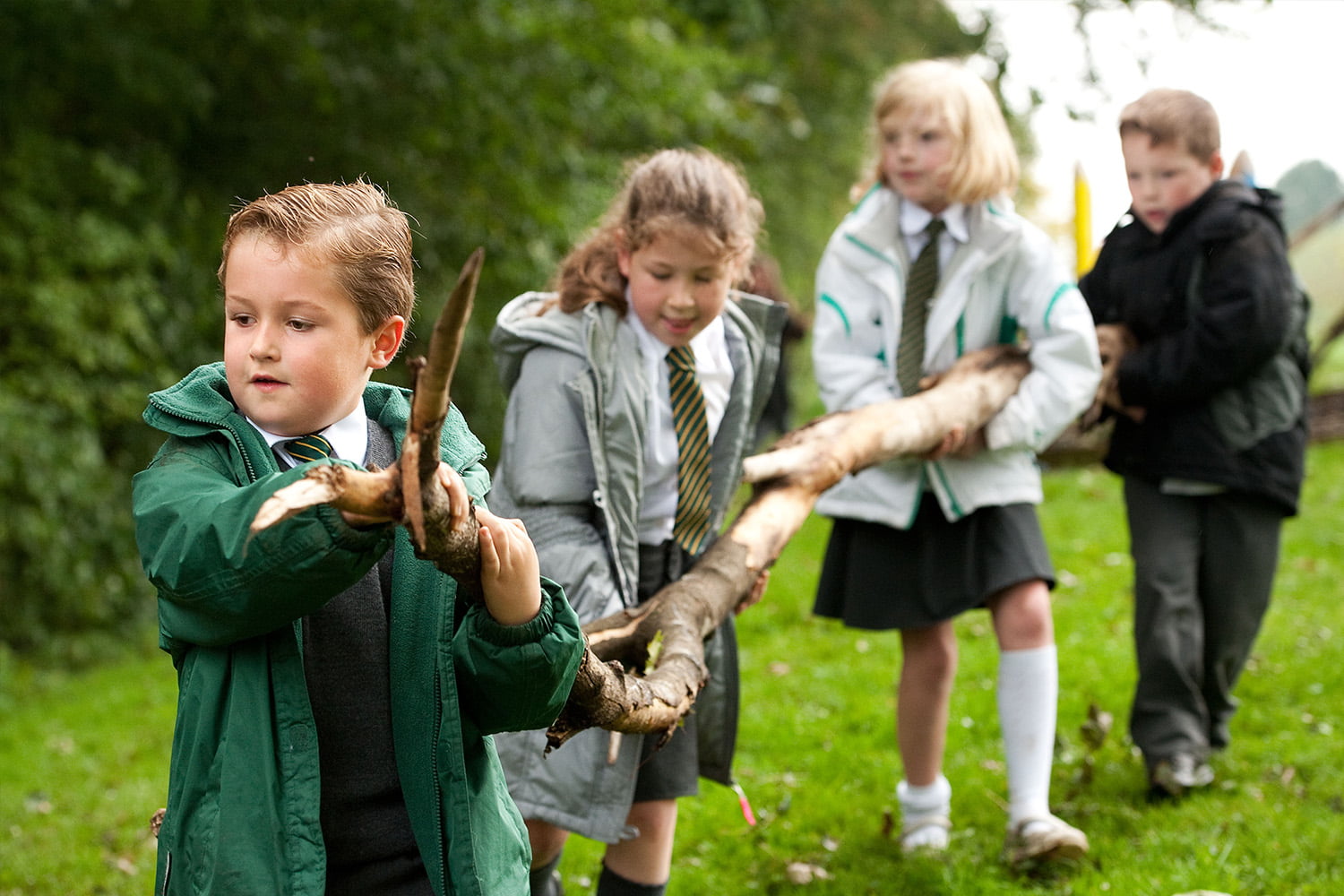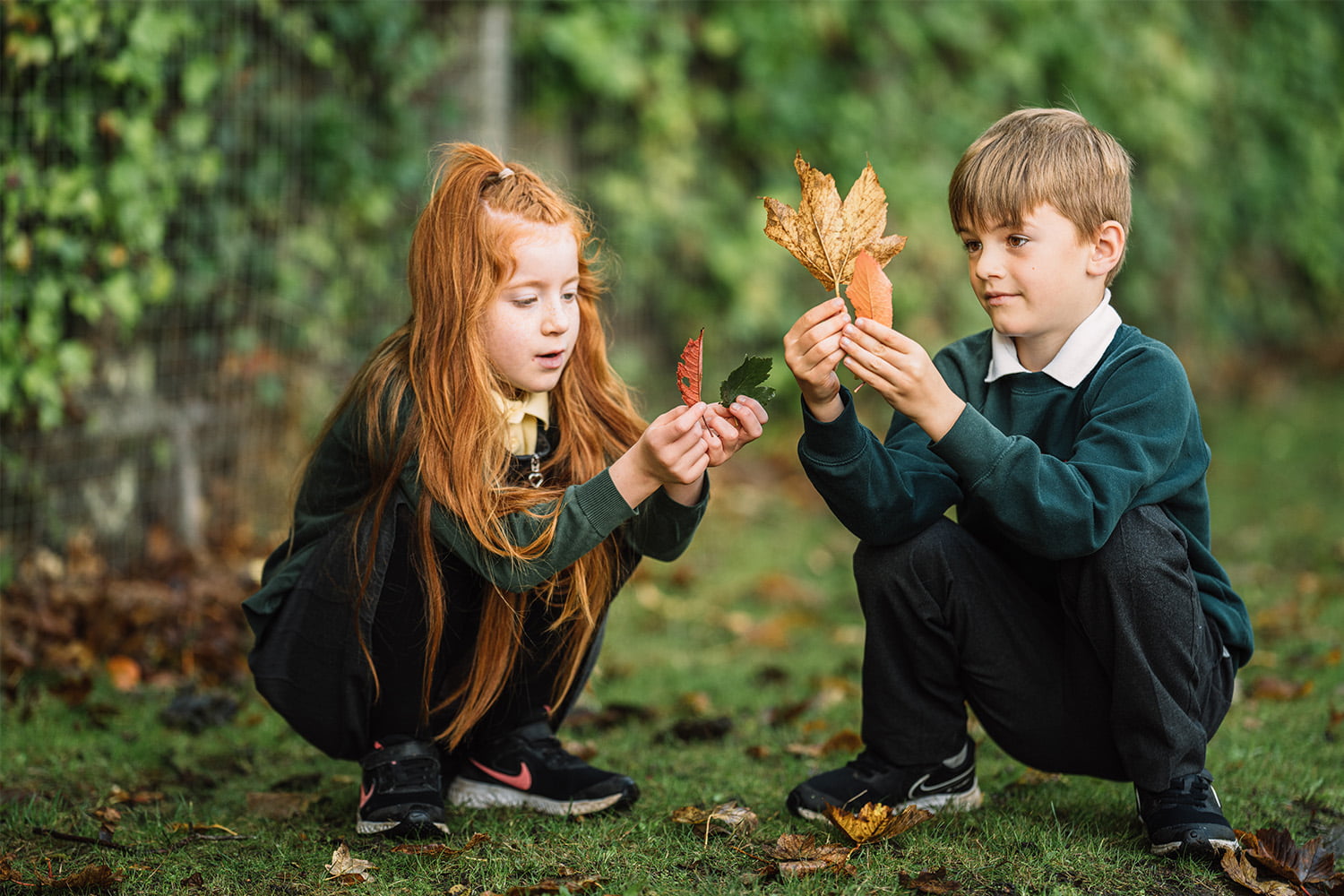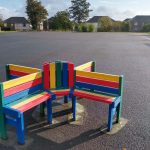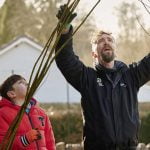5 barriers to outdoor learning at primary school and how to overcome them | Ask Educators
We asked primary school educators to share their advice for overcoming some common obstacles to outdoor learning.
We’ve looked at why you should teach outdoors and how to get started, along with some essential knowledge for early years outdoor learning and advice on teaching any subject outdoors at secondary school. Now, let’s explore the specific challenges faced by primary school educators when taking the classroom outdoors.
There’s a lot of discussion about the barriers to outdoor learning at primary school — but what about solutions? For this post, we asked primary school educators to share their advice for newcomers to outdoor learning. We’ve grouped the responses — and some guidance from LtL experts — into advice for overcoming five of the most cited obstacles to taking learning outdoors.
Visit our primary hub for outdoor lesson ideas, training, and guidance specific to outdoor learning in your setting. But first, let’s break down five barriers to outdoor learning at primary school and how to overcome them.
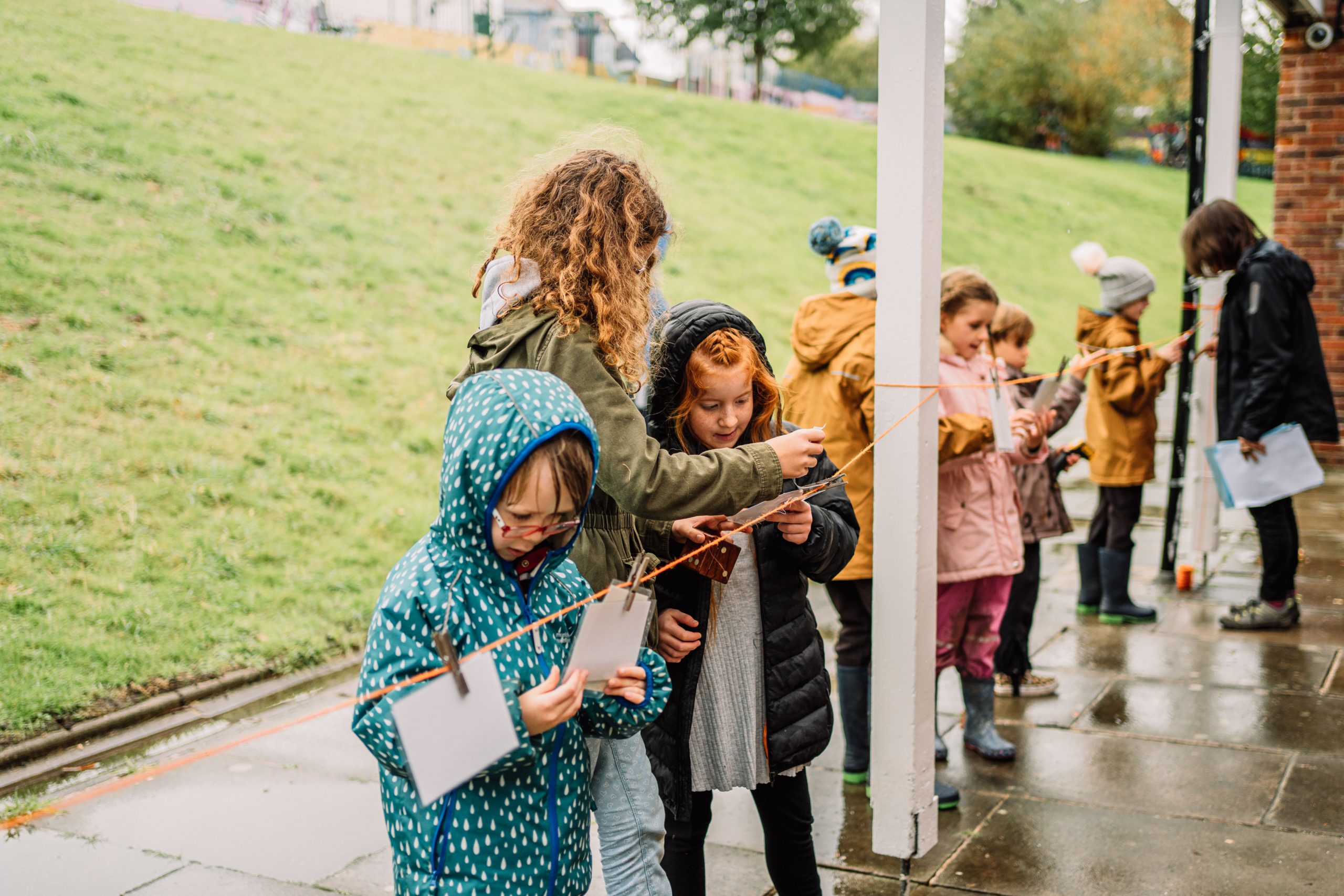
1. A lack of outdoor space and clothing
“Try to seek as many outdoorsy partners as possible and get the communities surrounding schools involved! Could there be more support from our commercial and industrial neighbours? If sustainability is included in business plans, isn’t supporting our learners part of this?”
— Jenny, primary school educator from Livingston
Review the spaces you have, however small — and don’t forget to think about your vertical space, too! Can you use your walls, fences, and hedges for display spaces or storage? Can you make better use of your grounds by moving things around? Could you look at timetabling the outdoor space you have, taking the same approach as you would with a school hall? Can you request use of local greenspaces during school hours? Work creatively and in partnership with your local community!
— Mary Jackson, Head of Education and Communities at Learning through Landscapes
“We are very lucky that the PTA funded waterproofs for every child! Additionally, each child has their own pair of wellies at school, either brought from home or a second-hand pair kept by the school for this purpose.”
— Jenny, primary school educator from Glasgow
It’s important to develop and communicate your wet weather policy with parents, and a store of spare clothes can be used to support those pupils who still come ill-equipped. Consider requesting donations from siblings, using unclaimed clothing from lost property, or a dedicated fundraiser.
We offer a number of resources to help educational settings develop their outdoor provision. Read our tips for developing your school grounds for some simple and affordable ways to improve your outdoor space, or browse our guidance on everything from finding or funding clothing to school grounds design.
Don’t forget to sign up to our monthly newsletter to be the first to know when our Local School Nature Grants programme reopens in the spring!
2. Fears about risk in the outdoor classroom
Don’t be too restricted by your risk assessment process. If there’s something you want to do, there’s always a way to get it done safely!
— Stephen, multi-phase educator from Abergavenny
“Talk to parents, or perhaps even invite them along! Some of them have no idea what outdoor learning involves and can be anxious about the child’s welfare. Show them why they don’t need to be! It might take the children some time to get used to the great outdoors, but the outdoors is still your classroom, just without walls and ceilings.”
— Alison, primary school educator from Audenshaw
You shouldn’t need any additional paperwork or permissions beyond an annual risk assessment and simple control measures for the school grounds. We encourage schools to use a risk-benefit approach when evaluating their grounds. At its simplest, this means that when you consider a space you want to use, you balance the benefits pupils will gain against the risks. A good example of acceptable and reasonable risk-taking would be learning to run — an activity we would all encourage and accept without question. You wouldn’t ban running because of one fall in the playground!
— Teaching the Primary Curriculum Outdoors
For more information on managing risk at your school, visit our page on understanding risk to find a variety of risk-benefit assessments to support you in the outdoor classroom.
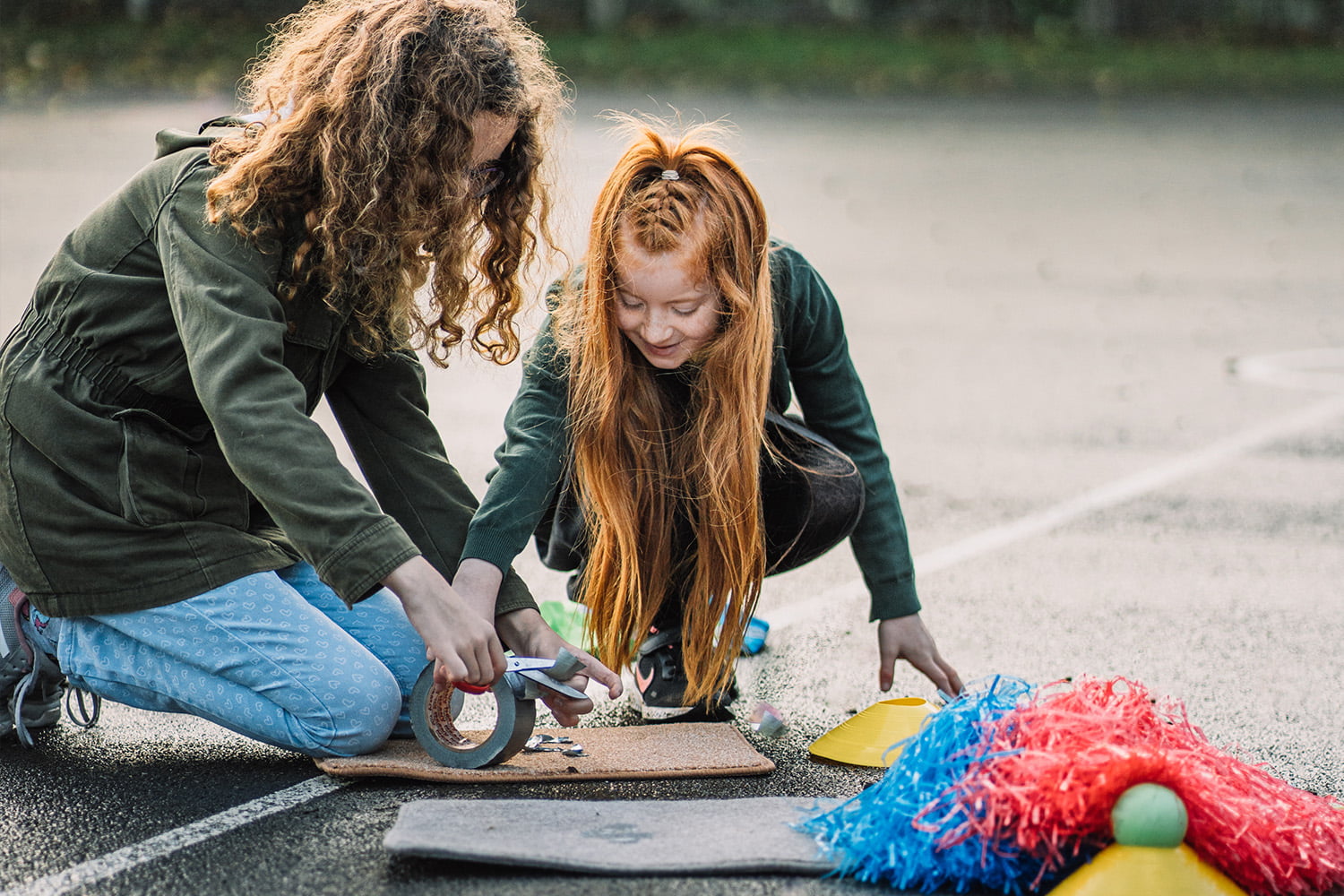
3. Concerns about meeting the demands of the curriculum
Outdoor learning is more than just play time (although play time is important, too!). You don’t have to choose between meeting the needs of the curriculum inside the classroom or taking the children outside. Instead, you can take the children outside to meets the needs of the curriculum! Extending indoor learning into real-life situations, applying knowledge to practical problems, and learning at different scales are all benefits of outdoor learning which will actually help you to deliver the curriculum effectively.
— Fiona MacNab, Training and Development Officer at Learning through Landscapes
“Try to see the outdoors as a medium for learning and achieving the curriculum. Don’t be apprehensive — it’s just a new place to teach!”
— Craig, primary school educator from South Wales
Some worry that teaching the curriculum outdoors makes it difficult to evidence the learning that’s taking place. There may be less work in pupils’ books, but this doesn’t mean they haven’t been learning! Sometimes we must trust that the practical learning we’re doing outside will be shown in later work where their understanding of a concept will be demonstrated. Make sure your school leaders support and understand this, so they’re not necessarily expecting written outcomes from every lesson.
— Teaching the Primary Curriculum Outdoors
“Plan your curriculum for the term, then look at which parts would work well outside. This can help with managing the time constraints of a very full curriculum.”
— Karen, primary school educator from Glasgow
Do different, not more. The bonus of teaching your curriculum outdoors is that it can be as simple as moving the location of your lesson, rather than it being an additional subject to cover. It only takes a couple of extra minutes to grab a coat or put a warm hat on, so we’re asking for different, not more.
— Matt Robinson, COO and Scotland Director at Learning through Landscapes
If you want to know more about teaching the primary curriculum outdoors, we wrote an entire book all about it! Featuring tips and tricks, practical advice, and curriculum-based activities across every subject, our book has been described as the ‘go-to resource’ for supporting primary school teachers in taking learning outdoors. Purchase your copy of Teaching the Primary Curriculum Outdoors now!
4. Fears about managing behaviour outdoors
Set new boundaries and expectations like you would for any new experience. It’s obviously different outdoors, and we don’t need to pretend that’s it’s the same as a lesson inside the classroom. Speak to the pupils directly about the fact that you’re giving them a bit more responsibility, especially if you’re doing something very active. Lots of pupils respond really well to that.
— Cindy Grant, Training and Development Officer at Learning through Landscapes
“Bear in mind that a variety of factors will affect behaviour outside. Some children may have a fear of getting dirty; some will struggle with the potential sensory overload; some will hold negative connotations due to previous outdoor encounters or even playtime experiences. Communicating with parents can help the children to prepare and may also inform you of any potential problems you might encounter.”
— Teaching the Primary Curriculum Outdoors
Allow for the novelty factor at first. I often say that taking your class outdoors is like opening a bottle of pop. The first time you do it, it’s really fizzy and high energy and exciting! However, it will get easier and easier each time.
— Matt Robinson, COO and Scotland Director at Learning through Landscapes
“Set expectations and build relationships with your class before you even set foot outside. When I blow the whistle or shout ‘sticky feet’, I expect everyone to come straightaway. Quite often, if every behaves and tries really hard with the activity, we can have ten minutes free play at the end.”
— Fiona MacNab, Training and Development Officer at Learning through Landscapes
For more tips on dealing with this particular issue, read our post about managing behaviour in the outdoor classroom.
5. A lack of teacher confidence in the outdoor classroom
Take small steps, consider getting some training, and network with some experienced outdoor teachers. There are more people than ever who are passionate about getting more people onboard with the benefits of outdoor learning, and they can guide you and chat to you without judgment.
— Craig, primary school educator from South Wales
“It does help to have your SLT on board, so see if you can find a mentor to build up your confidence outdoors. When you feel ready, you can present your risk assessments, the benefits etc. to the SLT and blow them away with your enthusiasm!”
— Fiona MacNab, Training and Development Officer at Learning through Landscapes
There are so many like-minded people and organisations out there offering lesson plans emailed to your inbox, Facebook groups, perhaps even some outdoor learning training! The science to back up the benefits helps but starting with outdoor activities that tick boxes on the curriculum front may lead to more open minds. The support is growing!
— E. Thomas, primary school educator from Woburn Sands
Did you know that teacher confidence is the biggest barrier to outdoor learning in schools? If you’re a member of a SLT who wants to learn more about developing outdoor learning at your school, take a look at our post on building teacher confidence.
Activity: Sorting Leaves
When you’re getting started, lesson plans can really help with building confidence in the outdoor classroom. We offer hundreds of free outdoor lesson ideas across every curricular area, and these are a great place to start your outdoor learning journey.
As you become more confident, we hope that you will feel able to get creative in the outdoor classroom, using our lesson ideas as inspiration rather than instruction. Our Early Years and Parenting Officer, Gordon MacLean, often encourages educators to ‘take it, break it, and make it your own’. So, let’s explore how you might do that by walking through a lesson idea together.
‘Sorting Leaves’ is a science activity which encourages children to use all of their senses to sort leaves in the school grounds, helping pupils to learn about biodiversity and classification. However, whilst ‘Sorting Leaves’ is primarily a science activity, it can also be used to achieve curriculum aims across literacy and language, maths, art and design, and more!
For example, could you explore rotation, tessellation, and symmetry by examining the shapes of the leaves as a class? Can you ask pupils to describe the leaves in writing, helping them to develop a wider range of vocabulary? Could the class sketch the leaves over different seasons, observing the changes throughout the year? Can you teach pupils about biomimicry by asking them to come up with a design which uses the features of the leaves as inspiration?
There are so many different curricular links to be found — and that’s just using leaves! The outdoor classroom offers untold opportunities to support your curriculum aims, so don’t be afraid to get creative with your lesson planning!
Download our free ‘Sorting Leaves’ lesson idea here.
Discover more resources for outdoor learning
We hope you’re feeling ready to take your primary school class outdoors! Make sure to visit our primary hub where you will find everything you need for outdoor learning at primary, including lesson ideas, training, and guidance. Don’t forget to pick up a copy of Teaching the Primary Curriculum Outdoors for your ‘essential guide to teaching and learning outside’!
Make sure you’re signed up to our newsletter to receive the latest outdoor learning news and opportunities direct to your inbox. For even more advice about outdoor learning and play in your educational setting, take a look at the rest of the posts in this series:
Why you should try outdoor learning this year
Our top tips for newcomers to outdoor learning
3 things you need to know about outdoor learning in the early years
How to teach any subject outdoors at secondary school


